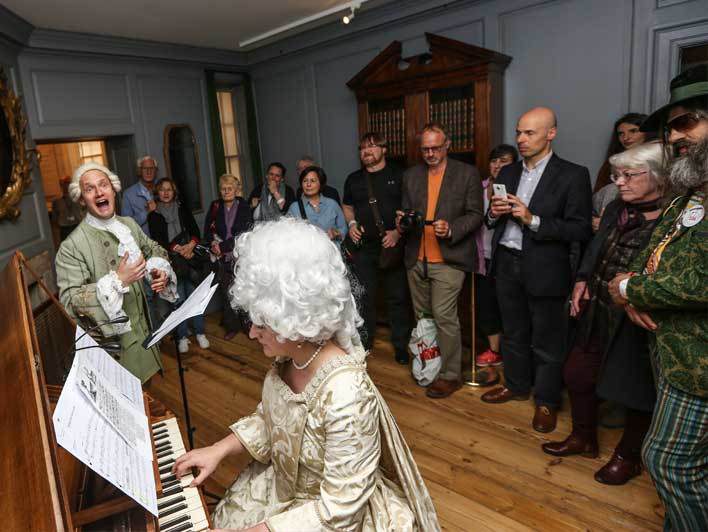AMADIGI DI GAULA (HWV 11)
Libretto: Unknown, but perhaps Nicolas Haym
First performance: 25th May 1715, King's Theatre, London
Cast
- Nicolo Grimaldi 'Nicolini' (Alto castrato)
- Diana Vico (Contralto)
- Anastasia Robinson (Soprano)
- Elisabetta Pilotti-Schiavonetti (Soprano)
Synopsis

Act I
The paladin Amadis urges his friend Dardanus to leave the enchanted abode of the sorceress Melissa with him. Dardanus is astonished that Amadis does not return Melissa’s love for him. The hero replies that he is smitten by another beauty, showing him the portrait of his beloved Oriana. A horrified Dardanus recognises in the picture the woman he too adores. Concealing his rancour, he exits to inform Melissa. The sorceress herself now appears; she tries to detain Amadis by revealing her passion, then by threatening him. But Amadis will not listen. Learning that Oriana has been imprisoned in a tower surrounded by flames, he hurries off to save her. Despite the treacherous opposition of Dardanus, Amadis manages to enter the tower. Oriana is saved, but not for long; at Melissa’s command she is abducted by demons. Amadis laments.

Act II
In an enchanted fountain, Amadis thinks he sees Oriana caressing Dardanus. The paladin faints in a fit of despair. Oriana, led to him by Melissa, believes him dead. She seizes his sword to kill herself, but Amadis awakens and rejects her, still convinced that she is unfaithful. Melissa again tries her luck with him, but in vain. She then suggests a ruse to Dardanus: she will make him look like Amadis so that he may seduce Oriana. Dardanus reluctantly agrees – and is about to have his way with the fair one when he sees his rival coming. He rushes at him, sword in hand. Amadis kills him. A furious Melissa immediately seizes Oriana and promises her the torments of hell.

Act III
Amadis and Oriana are led before Melissa in chains. Since they refuse to renounce each other, she prepares to slay them. But she has not the heart to do so. She calls the ghost of Dardanus to her aid. It emerges from the Underworld to declare that the gods protect the couple. Defeated, Melissa kills herself. The enchanter Orgando, Oriana’s uncle, descends form the skies to proclaim the end of the lovers’ trials and unites them.
Context
The librettist for Amadigi di Gaula is not identified in the word book produced to accompany the first performances, but as it is based on an original French source some believe that it is the work of Nicolas Haym, who had adapted Teseo for Handel in 1713. The earlier work had suffered structurally from its close adherence to the five-act structure of classic French theatre. This time, however, the adaptator of the seventeenth-century drama ‘Amadis de Grêce’ by Antoine Houdar de la Motte has attempted to telescope the events into the conventions of the three act Italian opera, but with a similar lack of success. As in Teseo the operatic conventions of exit arias and ensemble pieces are not realised.
The role of Oriana was taken at the first performance by the English soprano Anastasia Robinson. She had previously appeared as Almirena in a revival of Rinaldo, but this was the first time she had created a new role for Handel. Over the next decade she would be one of his most loyal and reliable performers, specialising in the type of ‘pathetic’ roles that Oriana exemplifies. Unfortunately, on this occasion Robinson was taken ill after the first performance and had to be replaced for the remaining five performances.
Although the 1715 opera season had started slightly earlier than usual, it came to an end prematurely on 23rd July. The threat of the Jacobite uprising, an attempt to restore the Catholic House of Stuart, had closed all theatres in London and elsewhere in the country. Colman tells us: ‘No Opera performed since ye 23 July, ye Rebellion of ye Tories and Papists being ye cause – ye King and Court not liking to go into such Crowds these troublesome times.’


